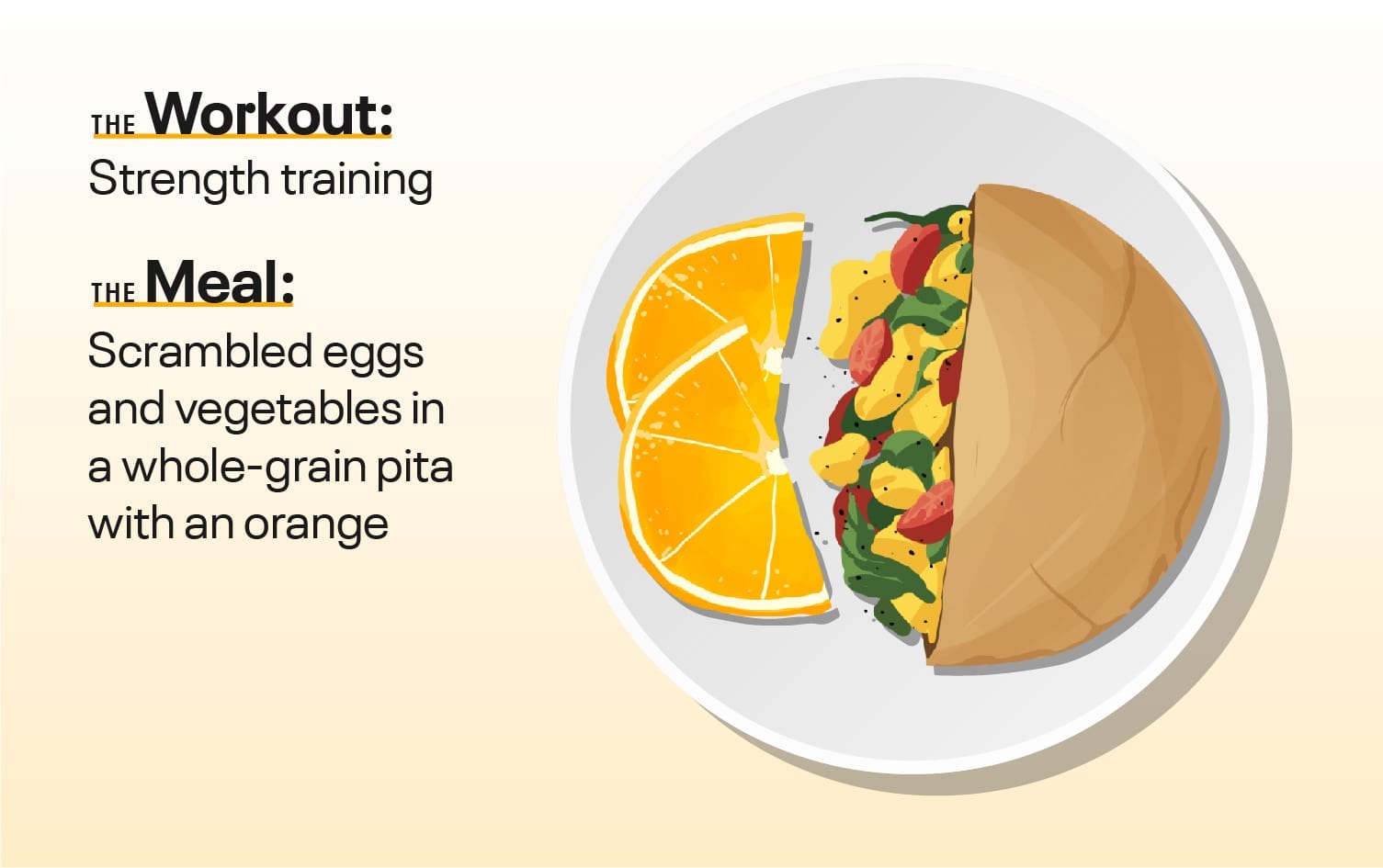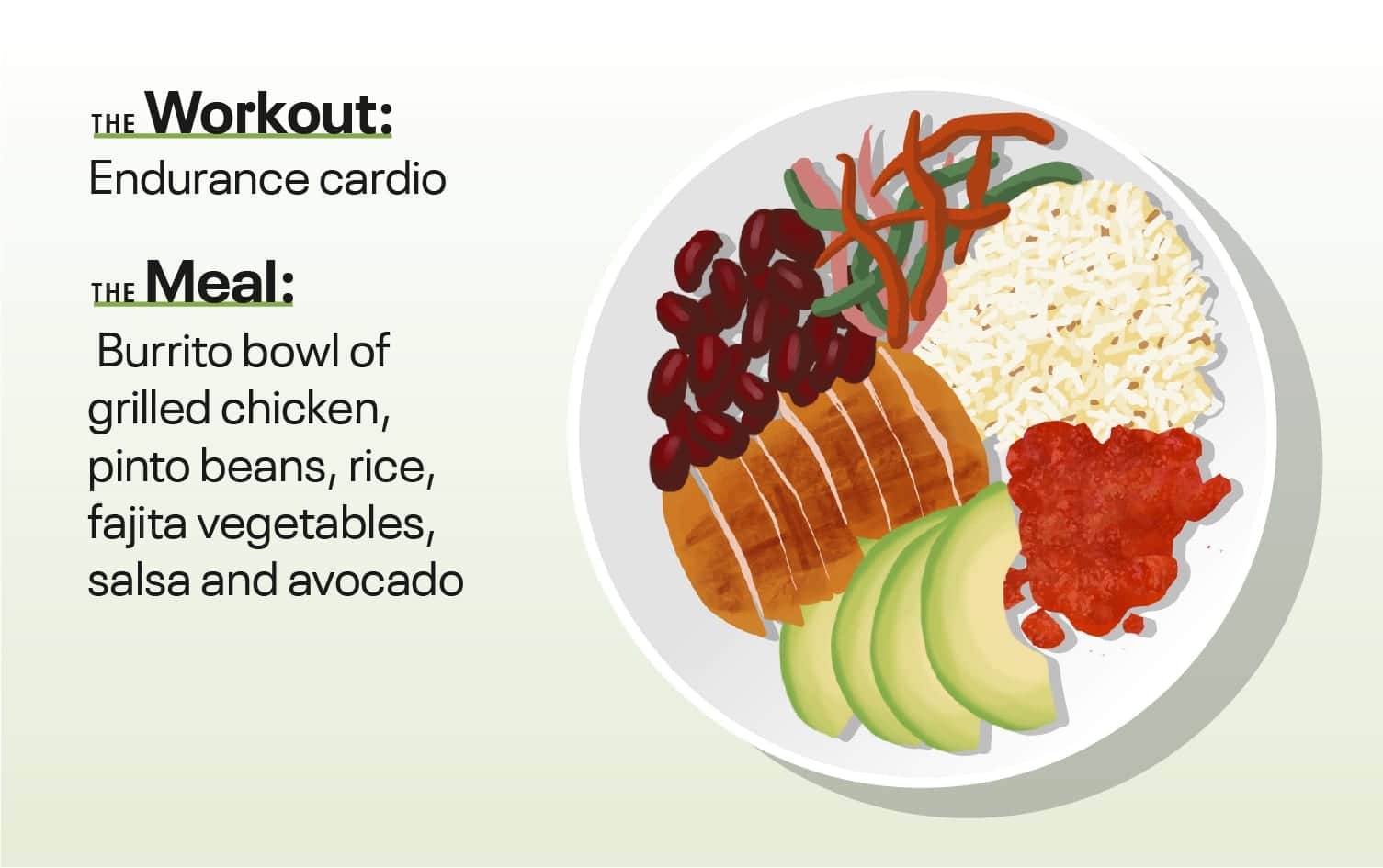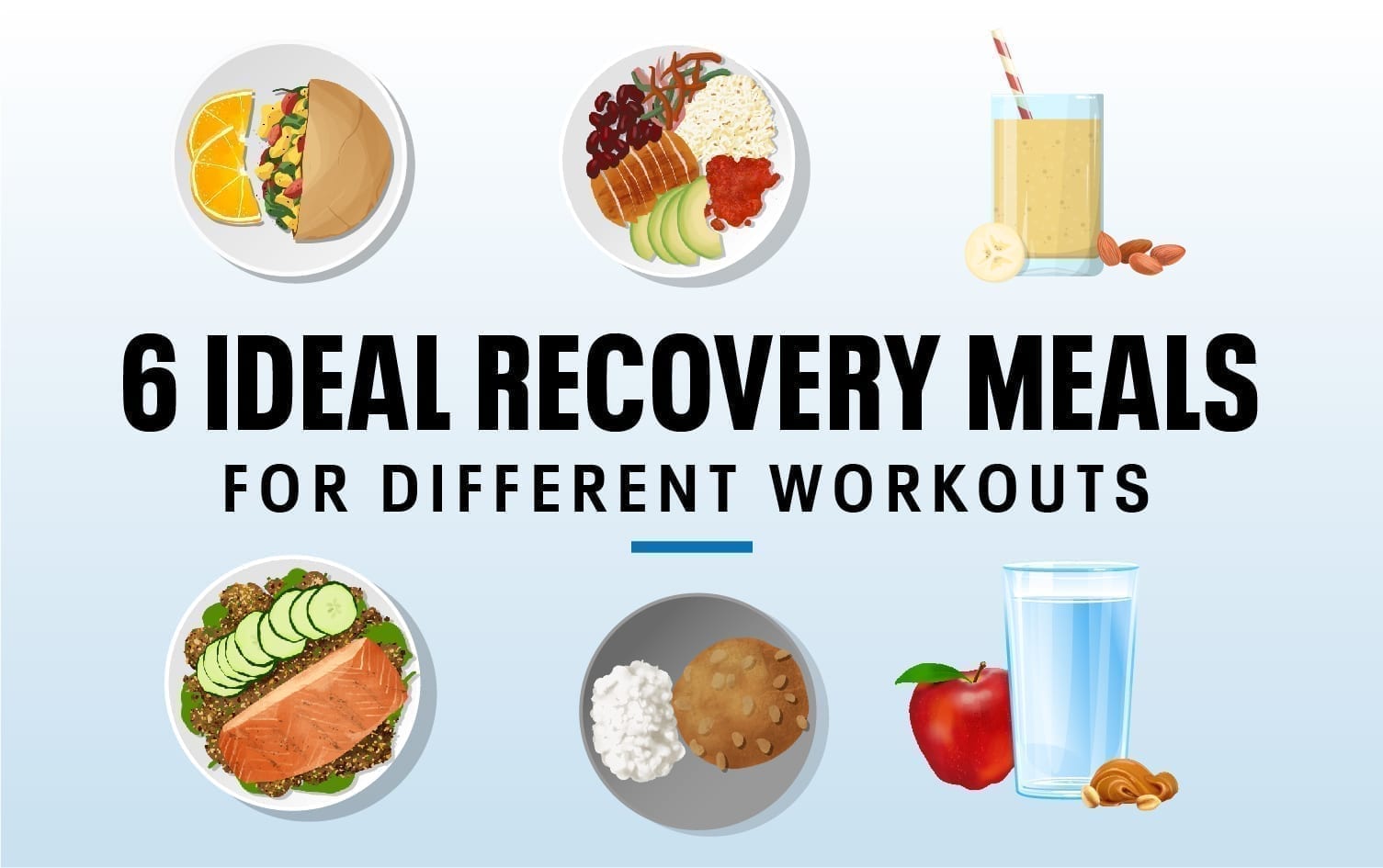Recovery nutrition is a vital but often overlooked mechanism for athletes looking to get results. Any physical exercise uses energy stores in the form of glycogen and causes damage to proteins in muscle cells. Ingesting calories in the form of protein and carbohydrates along with phytonutrients immediately after a workout can help the body recover — increasing muscle repair, reducing inflammation, and decreasing hunger later in the day.
However, different workouts and individual goals put different demands on the body, meaning recovery nutrition is not a one-size-fits-all approach. Sure, something is better than nothing, but there are ways to match your nutrition to your goals and efforts to maximize benefits.

Your goal for this workout is gaining muscle and strength. Consuming a protein-rich meal after training can help maximize the amount of protein the body can use to rebuild strained muscle tissue. However, protein is not the only thing your body needs. Branched-chain amino acids (BCAAs) — including leucine, isoleucine and valine — obtained through the consumption of protein-rich foods, assist the body in retaining lean tissue mass and improving muscle tissue synthesis.
Two eggs contain more than 3 grams of BCAA, making them a great recovery fuel option for this goal. Whole eggs are your best bet, as research indicates they promote more muscle growth than egg whites alone. Since many individuals looking to gain muscles are also looking to lean out, adding fiber from whole grains, vegetables and fruit boosts satiety; keeping you fuller longer.

Long endurance sessions — like a hard 4-hour bike ride — require subsisting on simple sports fuel and beverages for hours to keep the body going. Even with adequate fueling, these sessions can leave you extremely depleted by thousands of calories from all three macronutrients. Your gastric system may also be sluggish from excess simple sugars. Replenishing this full spectrum of nutrients requires more than a small snack.
Aim to eat a large, balanced meal such as a burrito bowl, with plenty of ingredient variety, to get your system back to digesting whole, nutritious foods. When the body is depleted too much for too long, the efficiency with which you can recover diminishes, so make sure to consume a large number of lost calories within the two hours post-workout.

A 90-minute tempo run, for example, is the kind of training that walks a fine line between intensity and endurance, depleting the body of a large amount of energy. The impact of running with intensity often creates a high strain on the gastric system, increases core body temperature, and can decrease appetite. However, not feeling hungry does not mean the body doesn’t need refueling.
For this circumstance, a smoothie can be an easy way to sip a large number of calories, nutrients and antioxidants to stimulate efficient glycogen replacement while providing antioxidants and nutrients to better assist with the recovery process. Adding more ice to your smoothie can help cool the body down after training and return to normal hunger sensations.

When the goal of an exercise routine — like a fat-burning spin class — is to lose weight, it might seem more logical to have a low-calorie snack post-workout to limit calories. This can backfire and result in bigger cravings and overall increased intake hours later.
Instead, increase your satiety levels immediately post-workout by consuming a light, yet filling, meal of unprocessed foods rich in complex carbs, protein, fiber, water and omega-rich fats. Fatty fish such as salmon has been shown to reduce inflammation caused by stress hormones which might promote greater fat loss. Another ingredient that can help fend off post-workout hunger is apple cider vinegar. This ingredient might decrease appetite and improve sensitivity to blood sugar levels.

While a fasted 60-minute swim session could be helpful for getting out early to complete training, skipping a pre-workout meal only increases the importance of the recovery meal. When glucose is not consumed for two hours post-workout, especially when fuel is not present before training, the body slows glycogen synthesis. Having a meal like cottage cheese and a healthy, whole-grain muffin that can be consumed quickly is key to supplying protein and carbohydrates for immediate recovery. Other options to prep ahead of time and bring to the pool with you could be overnight oats with protein powder or a peanut butter sandwich and Greek yogurt.

Tennis and other racket sports generally have a short duration of intense play. These bouts of activity might not feel like much, but they take a toll on the energy levels and smaller, stabilizer muscles. If you have a nutritious, full meal planned within roughly three hours post-workout, a caloric recovery meal would be overkill. Instead, focus on a snack that combines protein and carbohydrates to satisfy immediate hunger, control intake later on, and give the body just enough nutrients to begin the recovery process.
Check out “Workout Routines” in the MyFitnessPal app to discover and log workouts or build your own with exercises that fit your goals.




